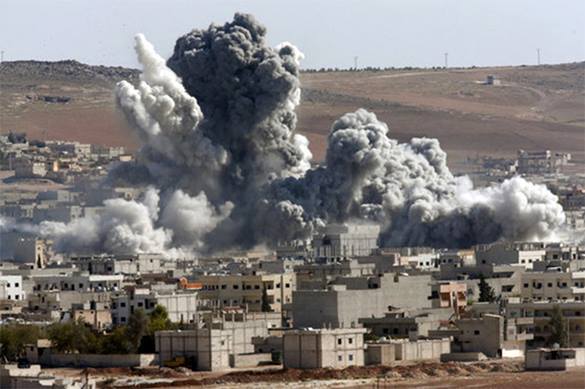Russian warplanes took off this week from Iran to hit targets in Syria. Russia has used Iranian bases for refueling and resupply in the past, but this is its first bombing mission from the Islamic Republic — it is also the first foreign military operation to take place from Iranian soil since the 1979 revolution. Iran’s National Security chief said Iran and Russia “enjoy strategic cooperation in the fight against terrorism in Syria, and share their facilities and capacities to this end.”
Whether temporary or serving longer term Russian interests, the increasing breadth and capability of the Russian military in the region — allied with the State Department’s number one designated state sponsor of terror — presents problems for the United States. The Obama administration, however, appears oddly unconcerned.
- A State Department spokesperson said, “We have nothing to announce at this time. We speak regularly with Russian officials about ways to strengthen the Cessation of Hostilities, improve humanitarian access and bring about the conditions necessary to find a political solution to this conflict.”
- Another spokesperson called it, “unfortunate, but not surprising or unexpected.”
- From the Pentagon, “As we understand it, they hit three areas in Syria. One area had ISIS fighters in it, and we have hit there ourselves before. The other two areas do not have ISIS concentrations.”
The area that did not have ISIS fighters had anti-Assad rebels. Does the State Department think Russian bombing will help “find a political solution to the conflict”? What does the U.S. think a “political solution” should look like?
There is no easy side for America to take — if we take any. On one side is a war criminal, whose allies are Russia, Iran, and Hizb’allah (a U.S.-designated terrorist organization). On the other is the “opposition,” a collection of fighters including Jabhat al-Nusra — until last week calling itself an arm of al Qaeda — the Free Syrian Army, ISIS-affiliated rebels, and groups with acronyms previously unknown. Some will fight ISIS. Someare ISIS. Some will fight only Assad. Just about all are Sunni Islamists supported financially by America’s erstwhile allies in the Gulf plus Turkey. Among the Kurdish groups, some are Assad’s allies; some are America’s allies. All are the enemy of Turkey, a NATO member.
Our allies have their own agendas, as do our adversaries.
The Iran-Russia axis anchors the ends of the Shiite Crescent from Iran across Iraq, Syria, and Lebanon, ending in the Mediterranean. The Crescent is an Iranian goal that threatens a variety of countries on its periphery, including Israel and Turkey. Russia’s goals include 1) maintaining a friendly government in Damascus that will permit Russian bases at Tartus and Latakia, 2) broader military access to the region, and 3) status as “go to” power as the United States withdraws its influence. Partnership in the Shiite Crescent ensures all three.
Washington has been trying to find a way to cooperate with Russia in Syria without acknowledging that Russia’s goals, and Iran’s, are inimical to the president’s insistence that Assad has to go. The Washington Post reminded its readers this week of Mr. Obama’s words in 2012. “With allies and partners, we will keep increasing the pressure, with a diplomatic effort to further isolate Assad and his regime, so that those who stick with Assad know that they are making a losing bet.”
Has the president changed his mind? Does he now believe the Russians and Iranians together can impose some sort of brutal stability on the region, and their dominance would be in our interest?
The longer the fighting goes on, the more casualties there will be — including civilian casualties. In a country where an estimated 470,000 people have already been killed, the numbers are horrific. The United Nations believes 1 in 10 Syrians have been killed or wounded since 2012; the American equivalent would be 32,400,000 people.
In 2014, President Obama snippily informed Israel that it must “do more to protect Gaza civilians,” while Hamas was using those civilians as shields for its fighters, weapons, and rocket launchers. But Syrians are dying at a horrific rate and by horrific means — chemical weapons, barrel bombs, starvation and more — while the United States tries to coordinate with Russia and Russia coordinates with Iran.
This is neither a call for the U.S. to send more troops to Syria nor support for any particular faction. But with more than 7,000 American troops already fighting there and in Iraq, it is past time for the United States to decide how to block Russian and Iranian neo-imperialism and secure the interests of our regional allies and ourselves.”


